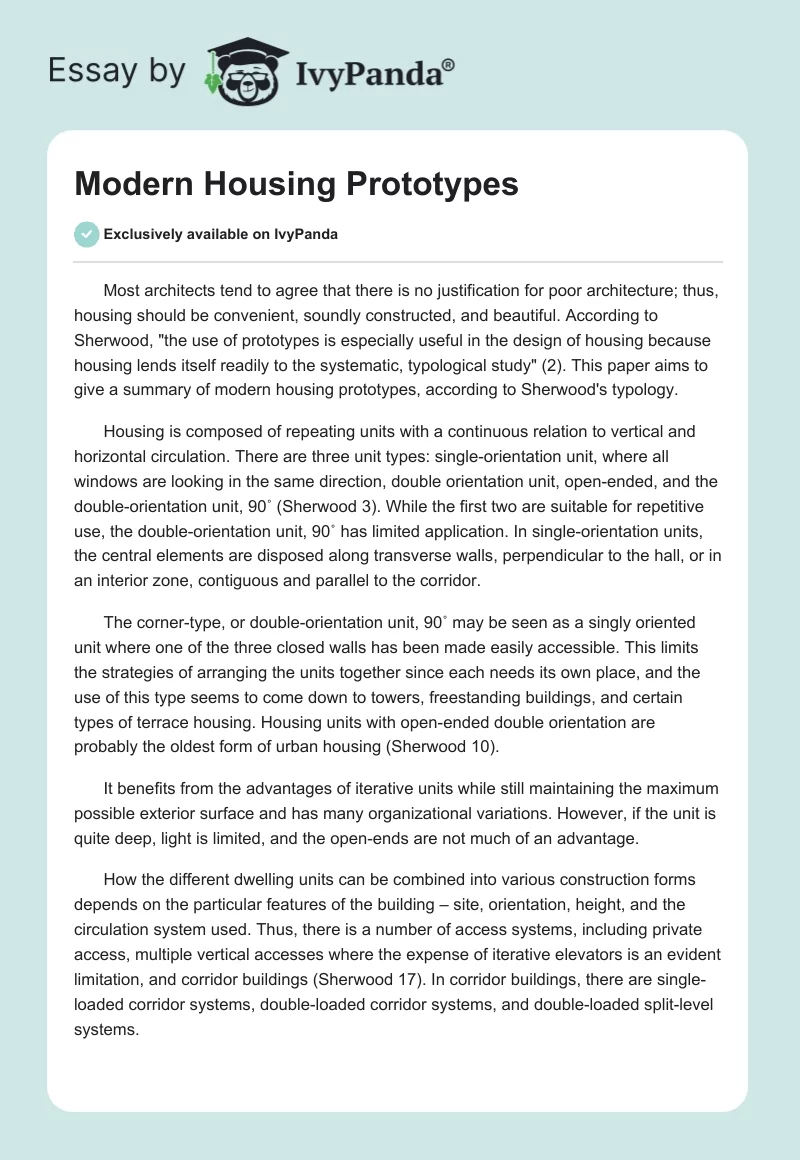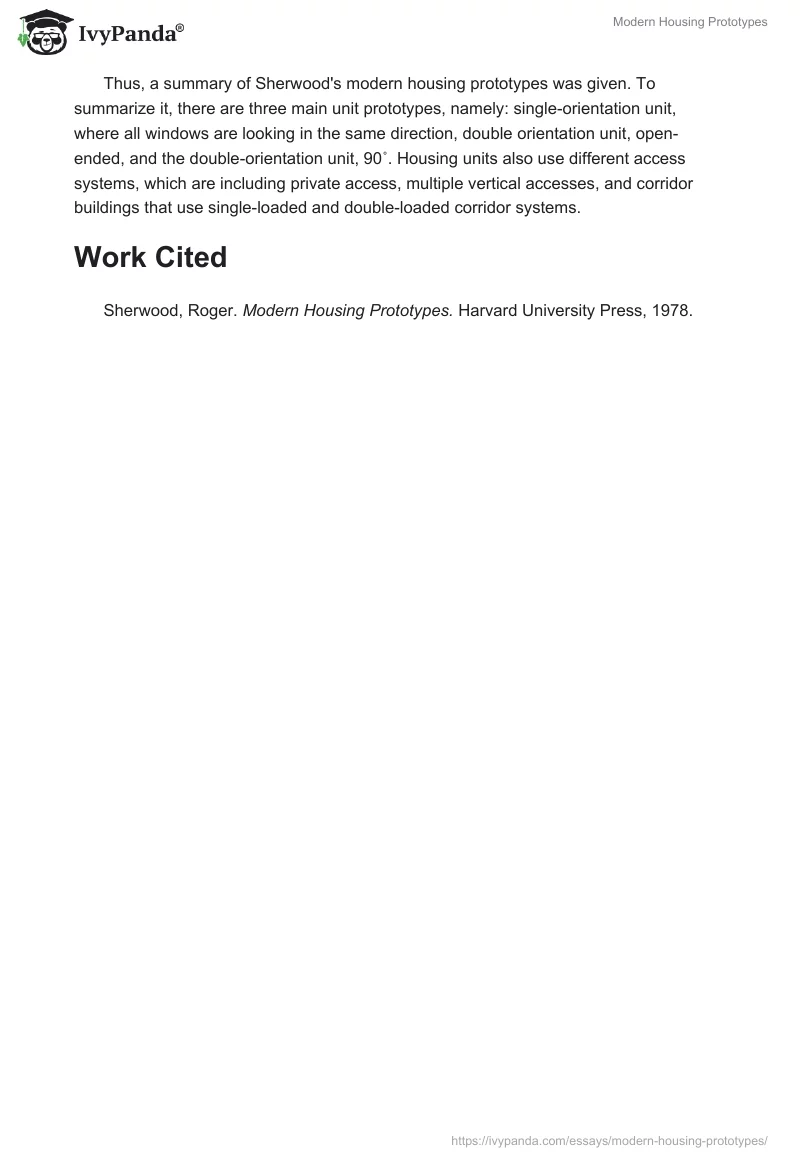Most architects tend to agree that there is no justification for poor architecture; thus, housing should be convenient, soundly constructed, and beautiful. According to Sherwood, “the use of prototypes is especially useful in the design of housing because housing lends itself readily to the systematic, typological study” (2). This paper aims to give a summary of modern housing prototypes, according to Sherwood’s typology.
Housing is composed of repeating units with a continuous relation to vertical and horizontal circulation. There are three unit types: single-orientation unit, where all windows are looking in the same direction, double orientation unit, open-ended, and the double-orientation unit, 90˚ (Sherwood 3). While the first two are suitable for repetitive use, the double-orientation unit, 90˚ has limited application. In single-orientation units, the central elements are disposed along transverse walls, perpendicular to the hall, or in an interior zone, contiguous and parallel to the corridor.
The corner-type, or double-orientation unit, 90˚ may be seen as a singly oriented unit where one of the three closed walls has been made easily accessible. This limits the strategies of arranging the units together since each needs its own place, and the use of this type seems to come down to towers, freestanding buildings, and certain types of terrace housing. Housing units with open-ended double orientation are probably the oldest form of urban housing (Sherwood 10).
It benefits from the advantages of iterative units while still maintaining the maximum possible exterior surface and has many organizational variations. However, if the unit is quite deep, light is limited, and the open-ends are not much of an advantage.
How the different dwelling units can be combined into various construction forms depends on the particular features of the building – site, orientation, height, and the circulation system used. Thus, there is a number of access systems, including private access, multiple vertical accesses where the expense of iterative elevators is an evident limitation, and corridor buildings (Sherwood 17). In corridor buildings, there are single-loaded corridor systems, double-loaded corridor systems, and double-loaded split-level systems.
Thus, a summary of Sherwood’s modern housing prototypes was given. To summarize it, there are three main unit prototypes, namely: single-orientation unit, where all windows are looking in the same direction, double orientation unit, open-ended, and the double-orientation unit, 90˚. Housing units also use different access systems, which are including private access, multiple vertical accesses, and corridor buildings that use single-loaded and double-loaded corridor systems.
Work Cited
Sherwood, Roger. Modern Housing Prototypes. Harvard University Press, 1978.


